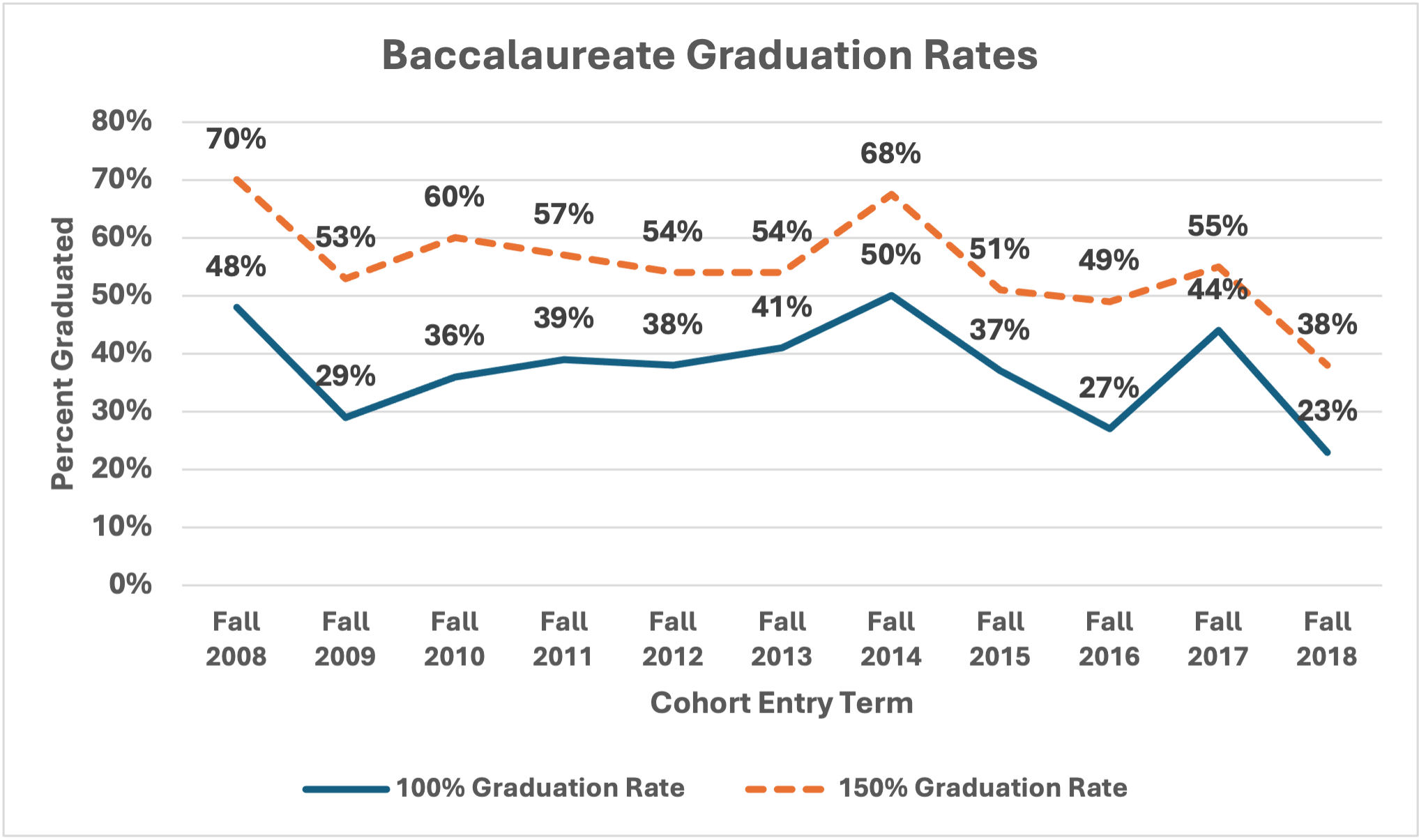Institutional Research - Graduation Rates
Graduation Rates
The graphs below represent both 100% and 150% graduation rates for the Associate and Baccalaureate cohorts, respectively. A cohort is defined as incoming first-time, full-time students for the indicated fall term. The 150% rates include those who graduated within the 100% timeframe. For both associate and baccalaureate graduates, the 150% rates are much higher than 100% rates, and have remained fairly consistent over a ten-year period; associate cohorts in the graph range from those entering in the Fall 2011 term through Fall 2021, whereas baccalaureate cohorts range from Fall 2008 – Fall 2018.
Trends in Associate Graduation Rates

| Fall 2011 | Fall 2012 | Fall 2013 | Fall 2014 | Fall 2015 | Fall 2016 | Fall 2017 | Fall 2018 | Fall 2019 | Fall 2020 | Fall 2021 | |
|---|---|---|---|---|---|---|---|---|---|---|---|
| N | 798 | 819 | 825 | 877 | 743 | 792 | 834 | 693 | 649 | 450 | 402 |
| 100% Graduation Rate | 26% | 22% | 29% | 24% | 26% | 25% | 27% | 25% | 28% | 30% | 33% |
| 150% Graduation Rate | 39% | 38% | 43% | 36% | 38% | 37% | 40% | 34% | 38% | 40% | 44% |
Trends in Baccalaureate Graduation Rates

| Fall 2008 | Fall 2009 | Fall 2010 | Fall 2011 | Fall 2012 | Fall 2013 | Fall 2014 | Fall 2015 | Fall 2016 | Fall 2017 | Fall 2018 | |
|---|---|---|---|---|---|---|---|---|---|---|---|
| N | 60 | 62 | 45 | 82 | 100 | 105 | 80 | 79 | 81 | 124 | 95 |
| 100% Graduation Rate | 48% | 29% | 36% | 39% | 38% | 41% | 50% | 37% | 27% | 44% | 23% |
| 150% Graduation Rate | 70% | 53% | 60% | 57% | 54% | 54% | 68% | 51% | 49% | 55% | 38% |